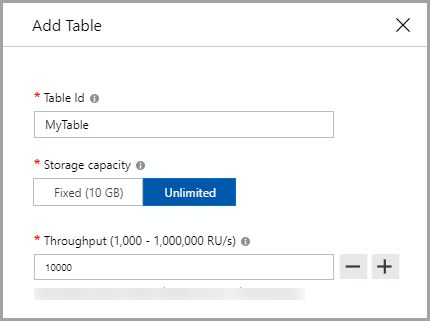Note
Access to this page requires authorization. You can try signing in or changing directories.
Access to this page requires authorization. You can try changing directories.
This article explains the different ways to create a container in Azure Cosmos DB for Table. It shows how to create a container using Azure portal, Azure CLI, PowerShell, or supported SDKs. This article demonstrates how to create a container, specify the partition key, and provision throughput.
This article explains the different ways to create a container in Azure Cosmos DB for Table. If you are using a different API, see API for MongoDB, API for Cassandra, API for Gremlin, and API for NoSQL articles to create the container.
Note
When creating containers, make sure you don't create two containers with the same name but different casing. That's because some parts of the Azure platform are not case-sensitive, and this can result in confusion/collision of telemetry and actions on containers with such names.
Create using Azure portal
Sign in to the Azure portal.
Create a new Azure Cosmos DB account, or select an existing account.
Open the Data Explorer pane, and select New Table. Next, provide the following details:
- Enter a Table ID.
- Enter a throughput to be provisioned (for example, 1000 RUs).
- Select OK.

Note
For API for Table, the partition key is specified each time you add a new row.